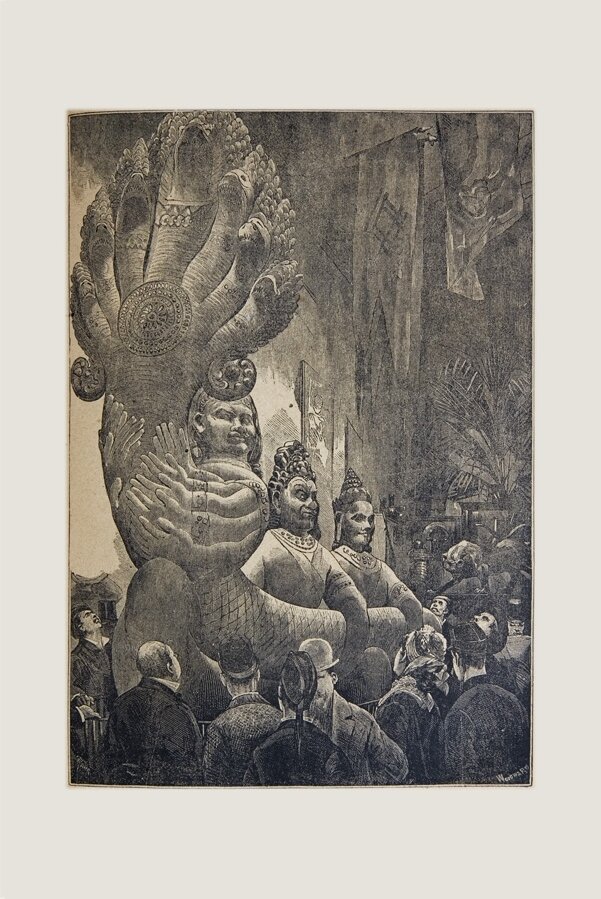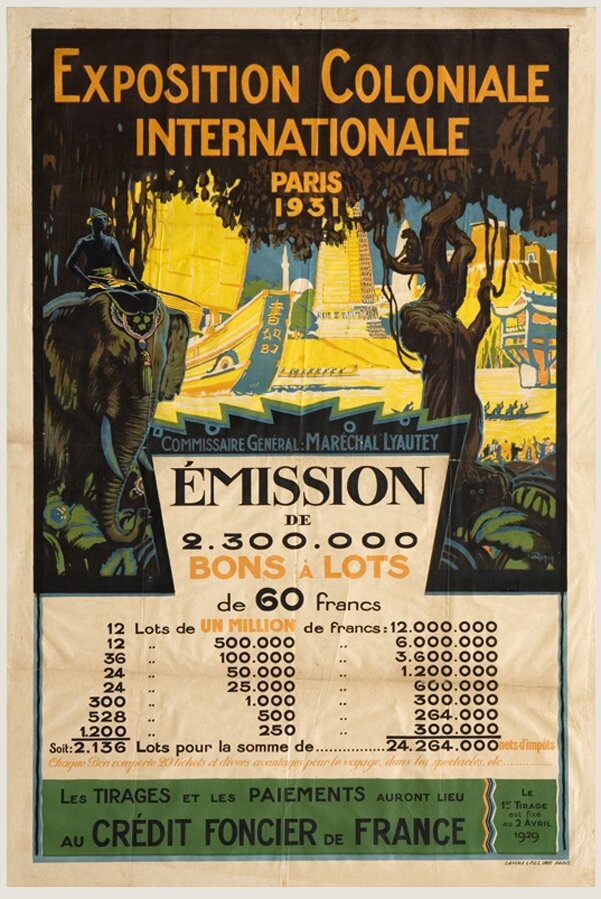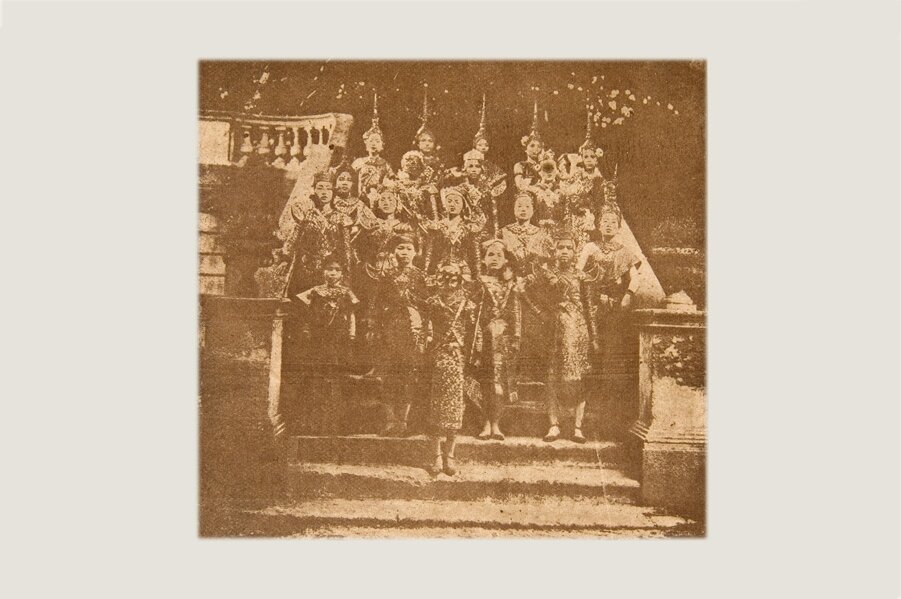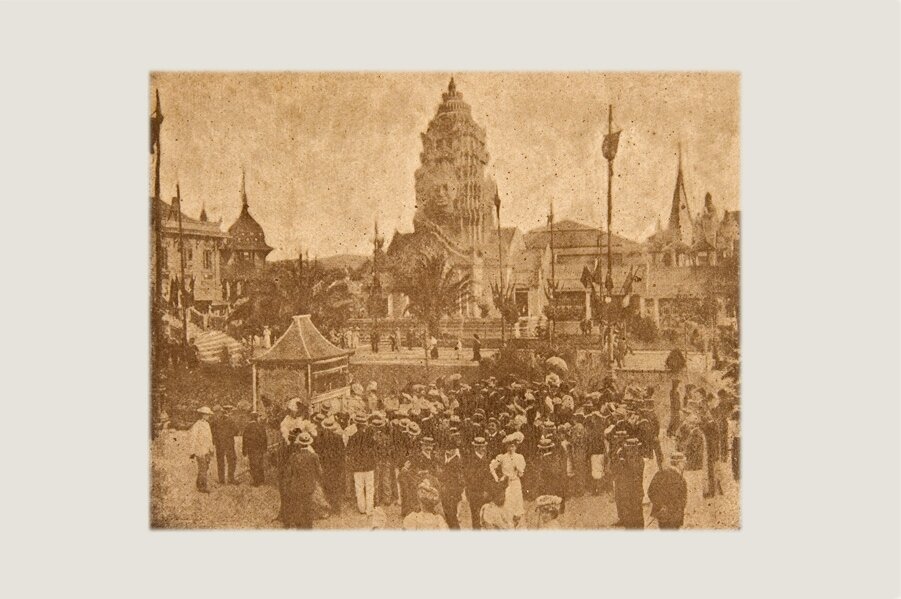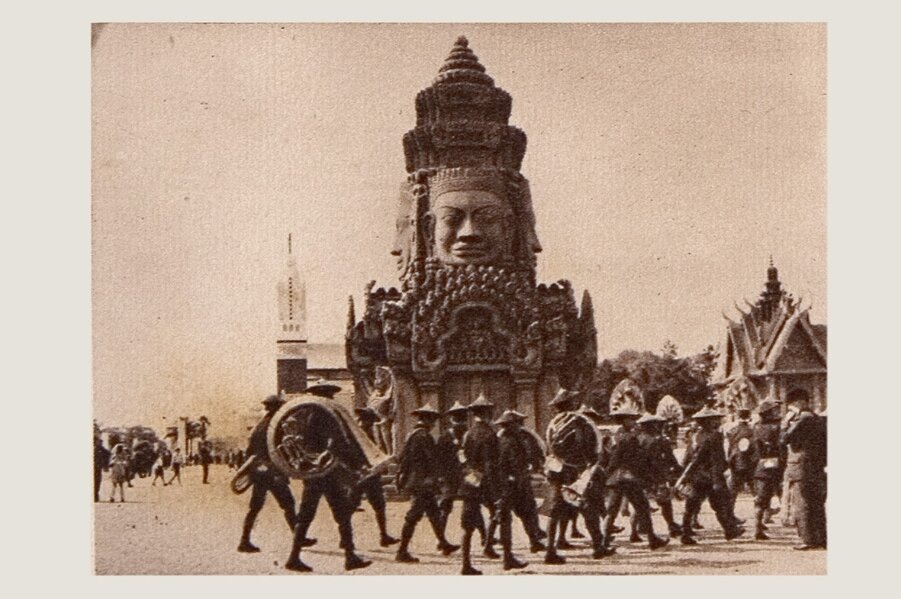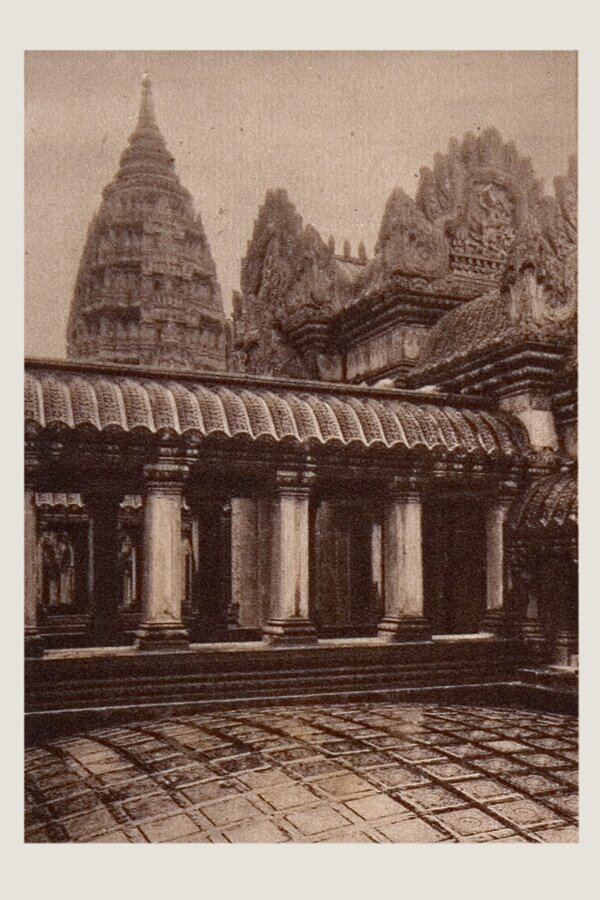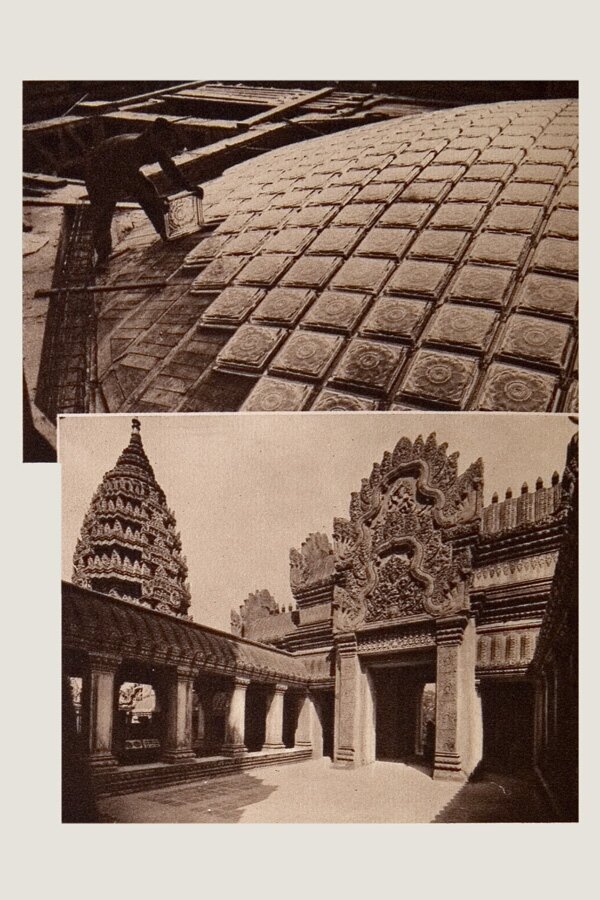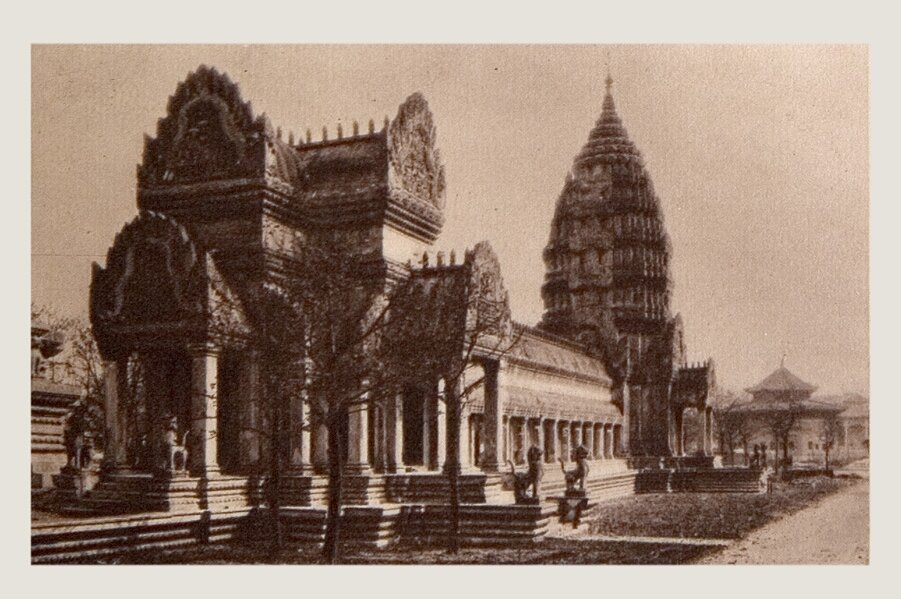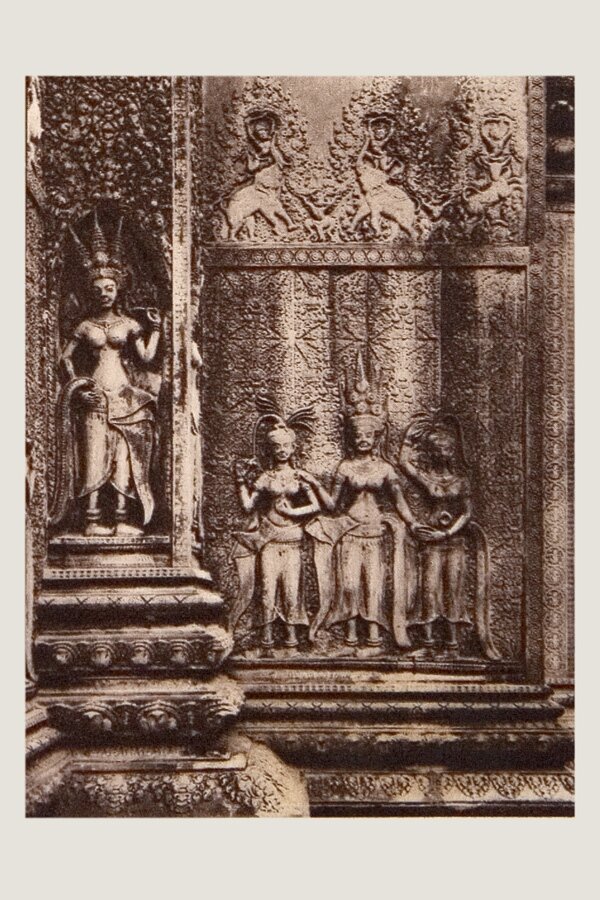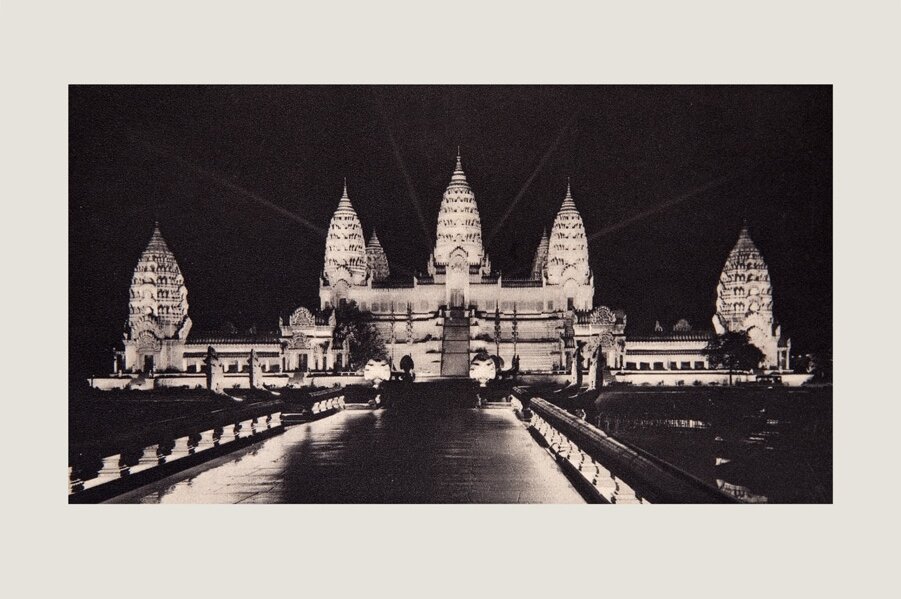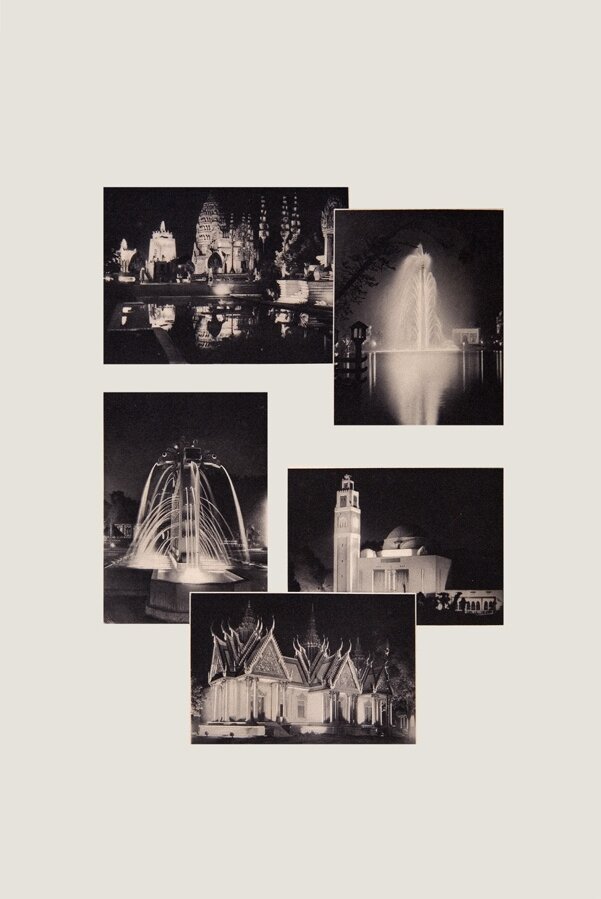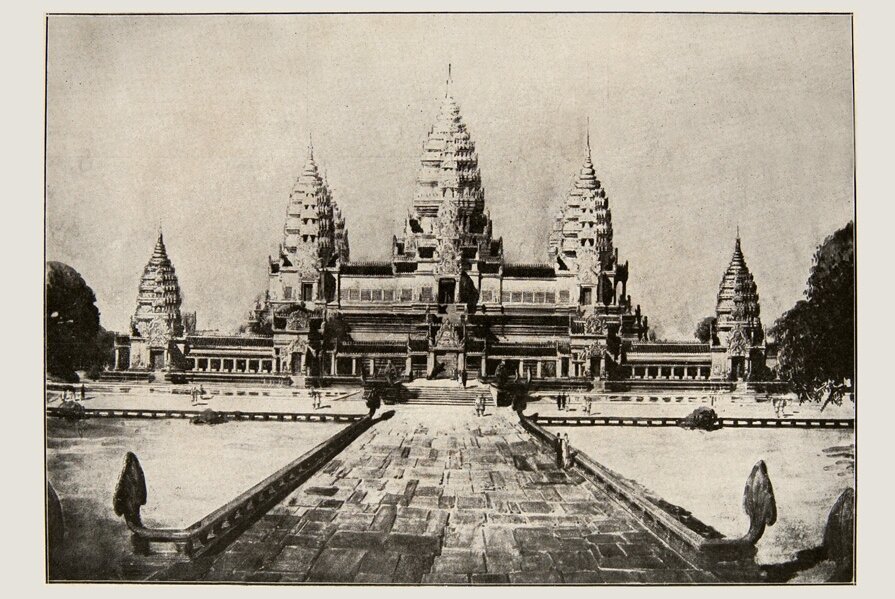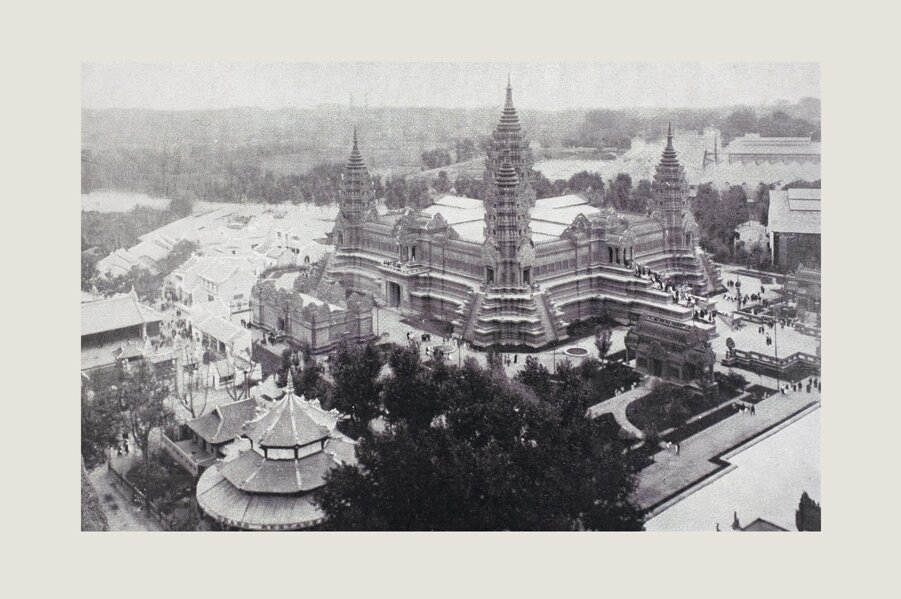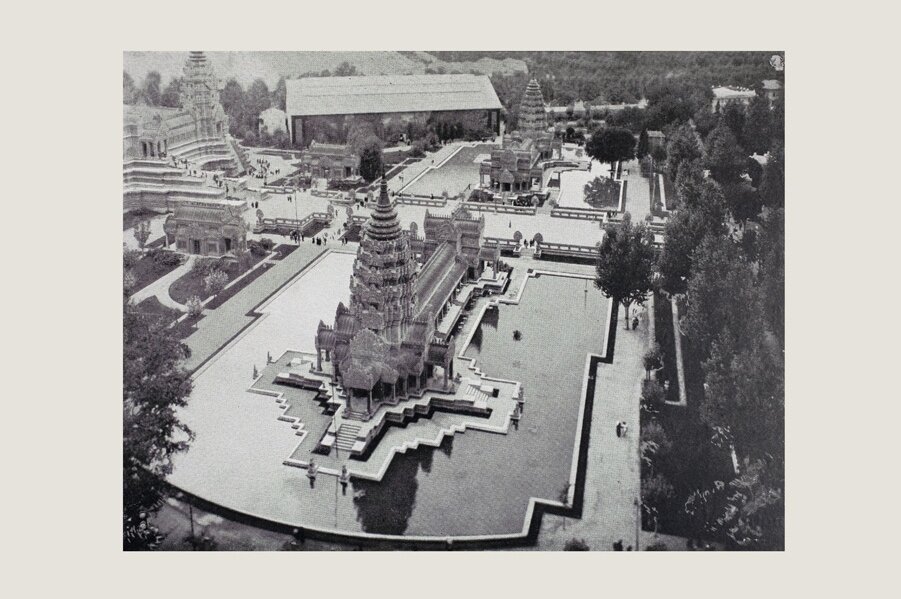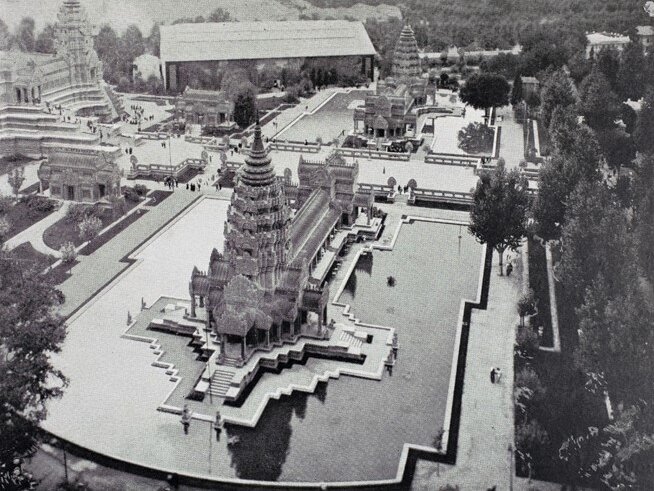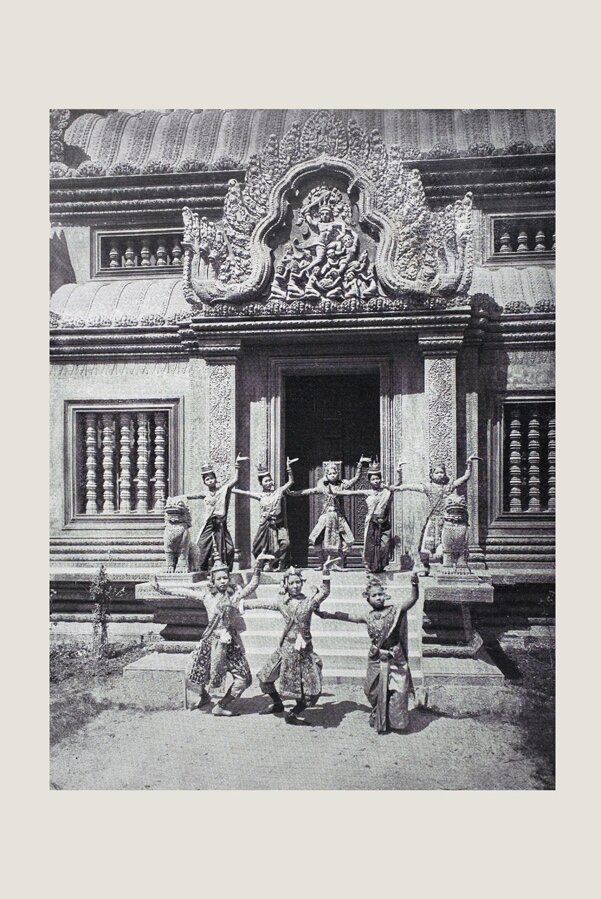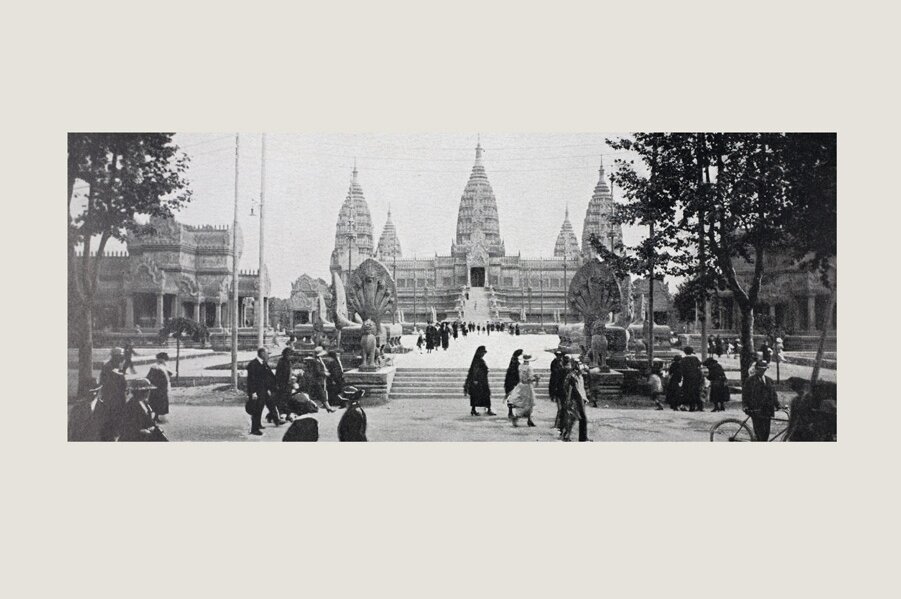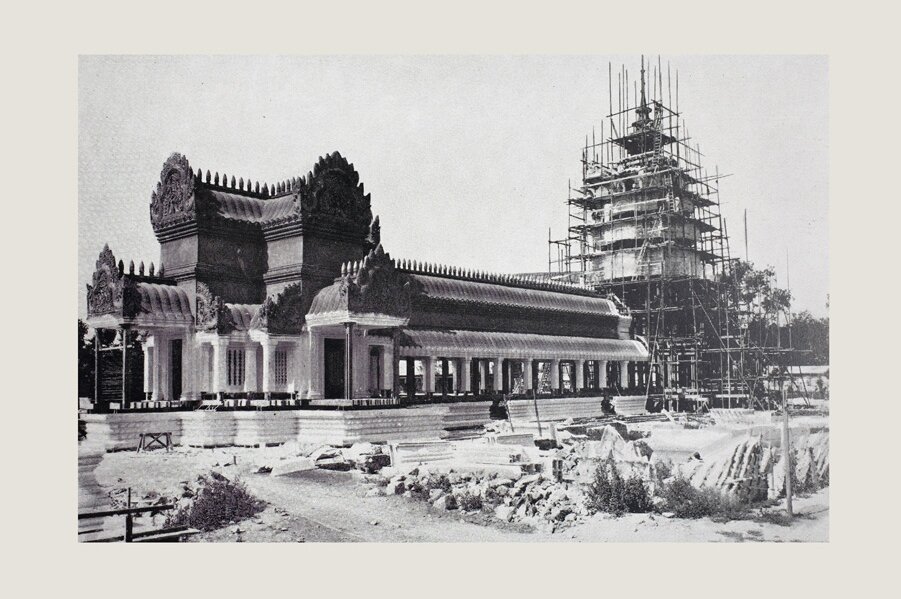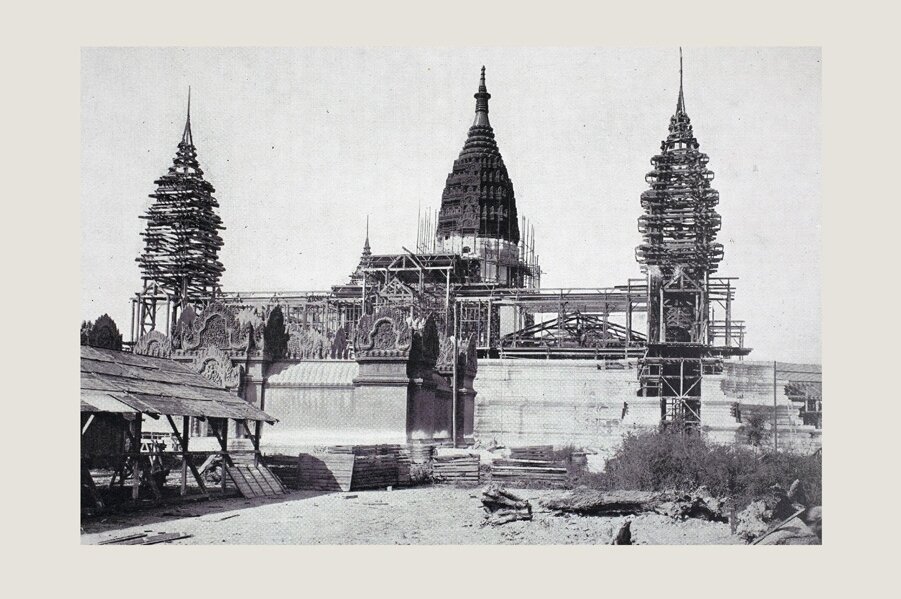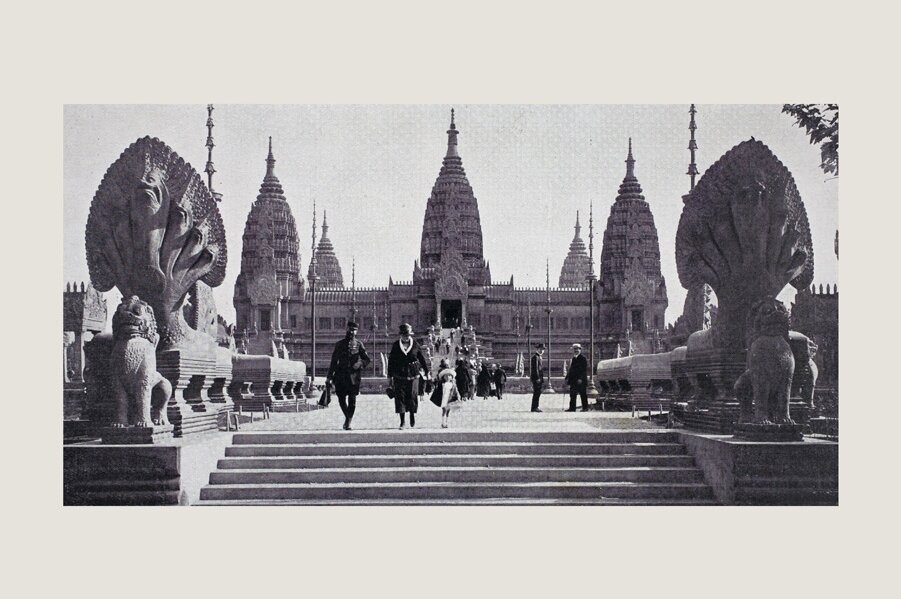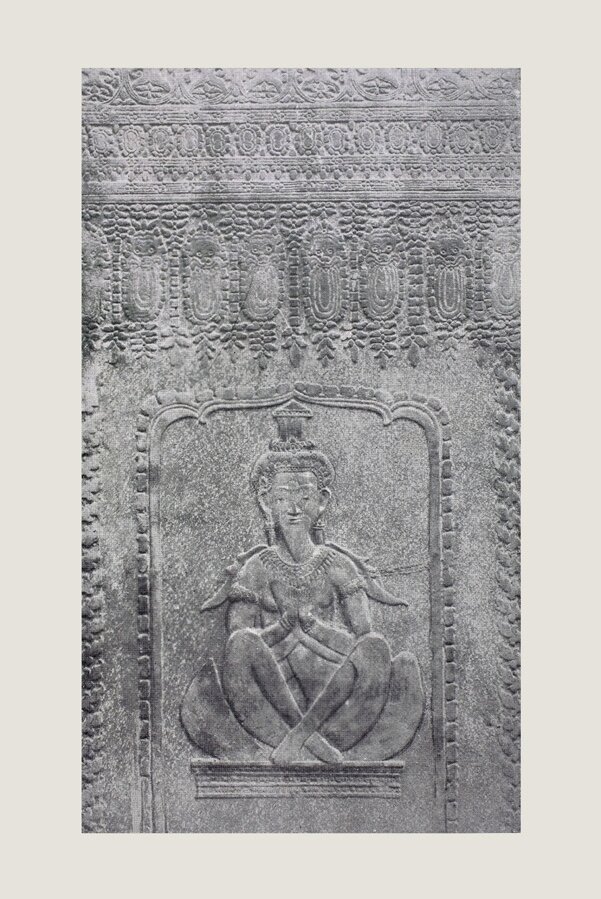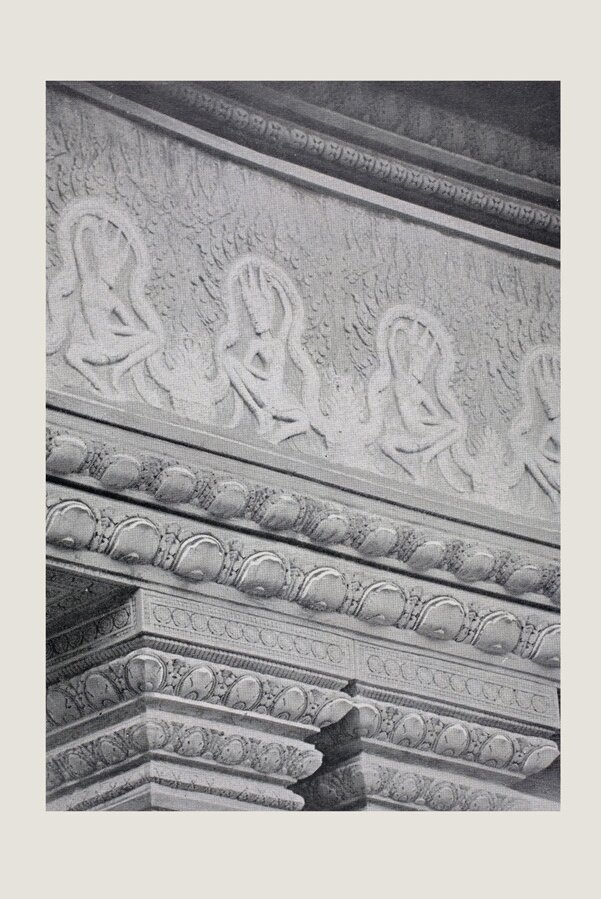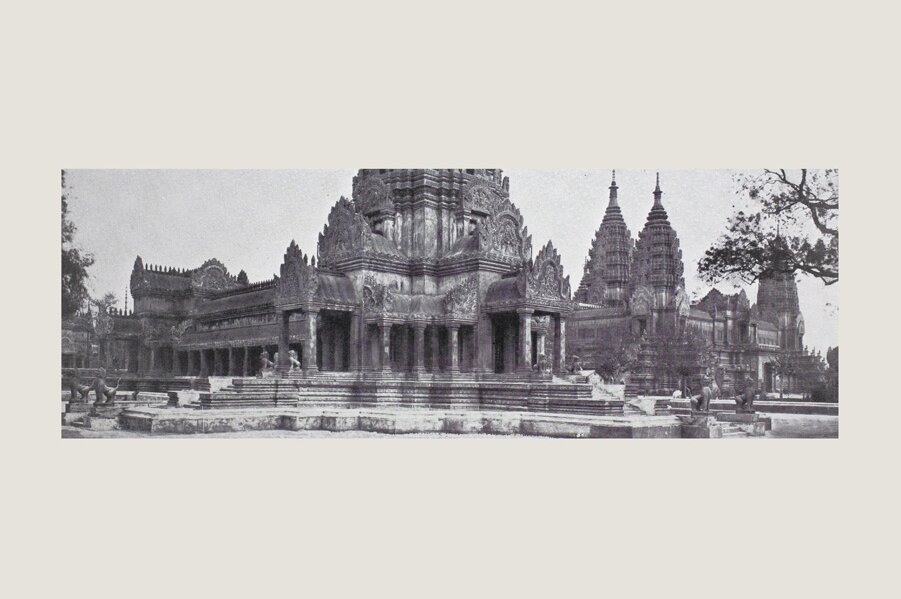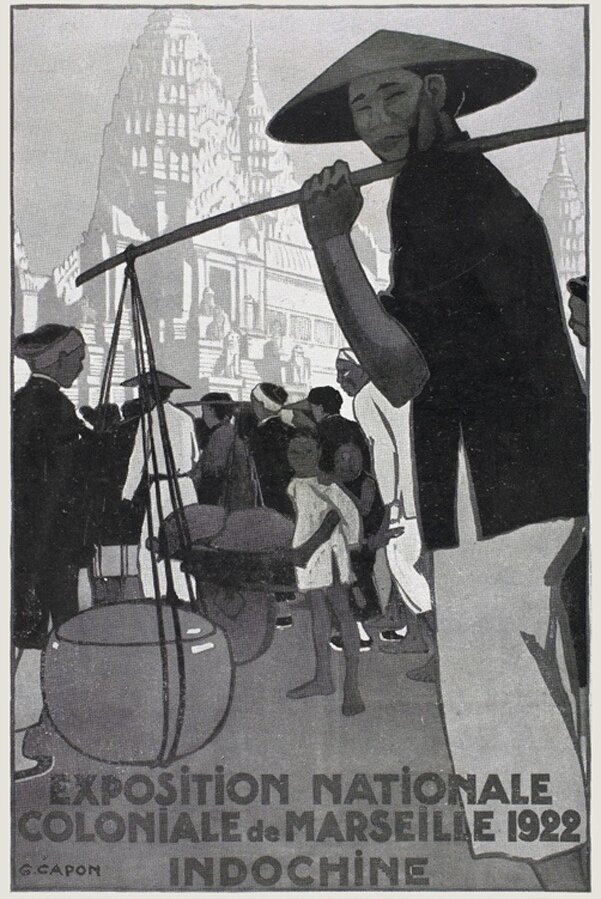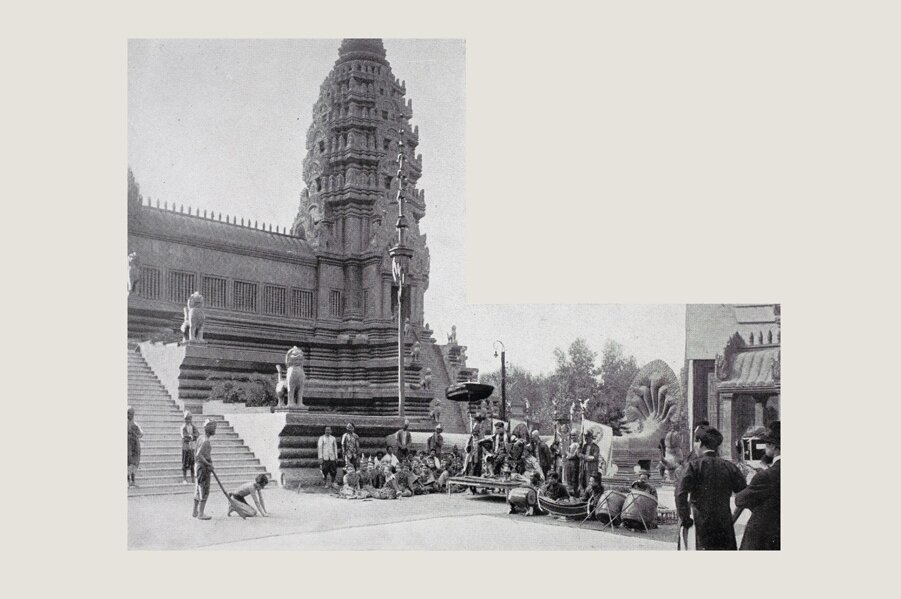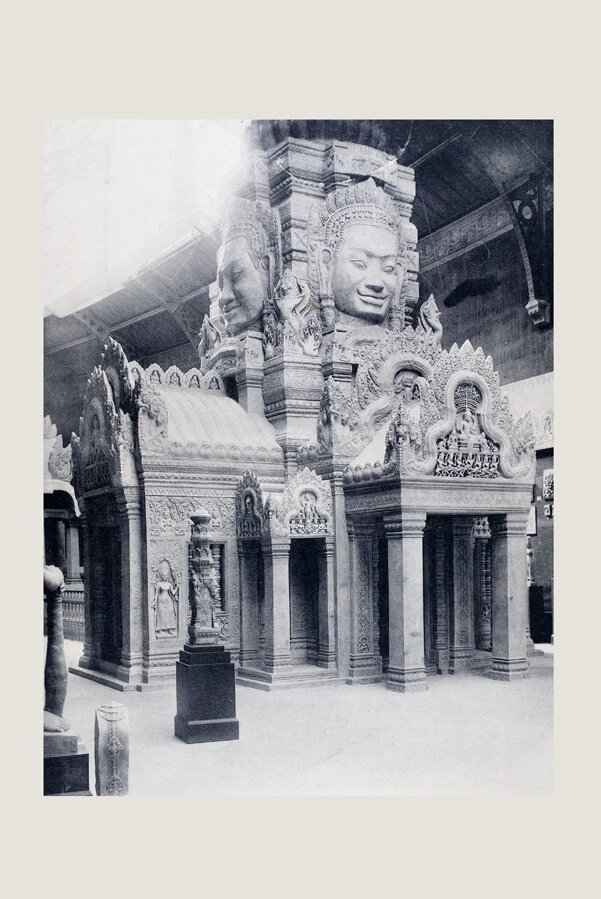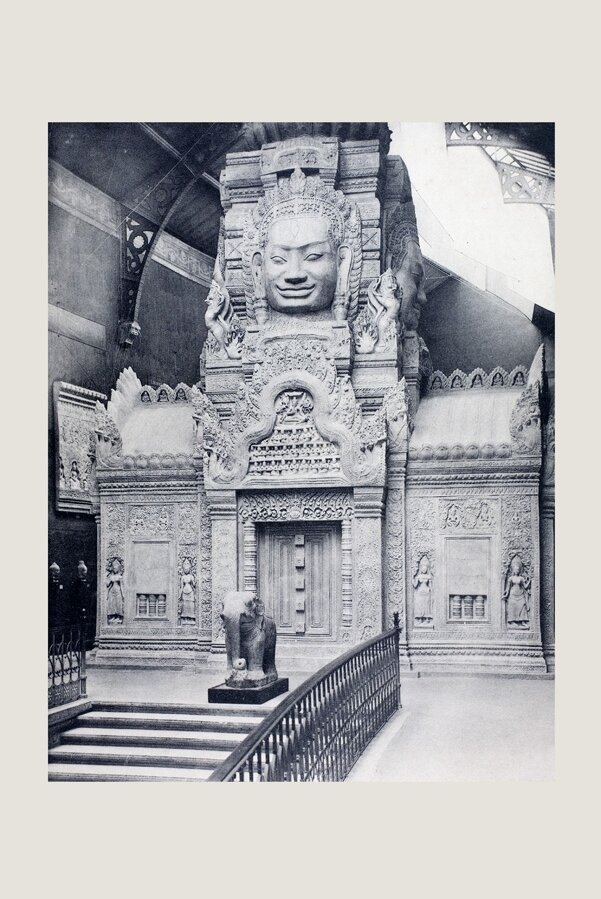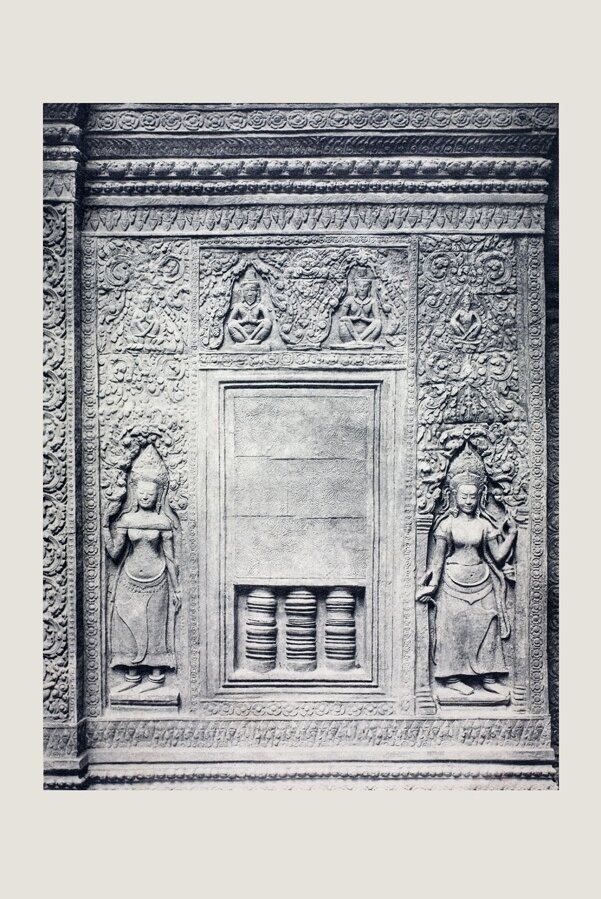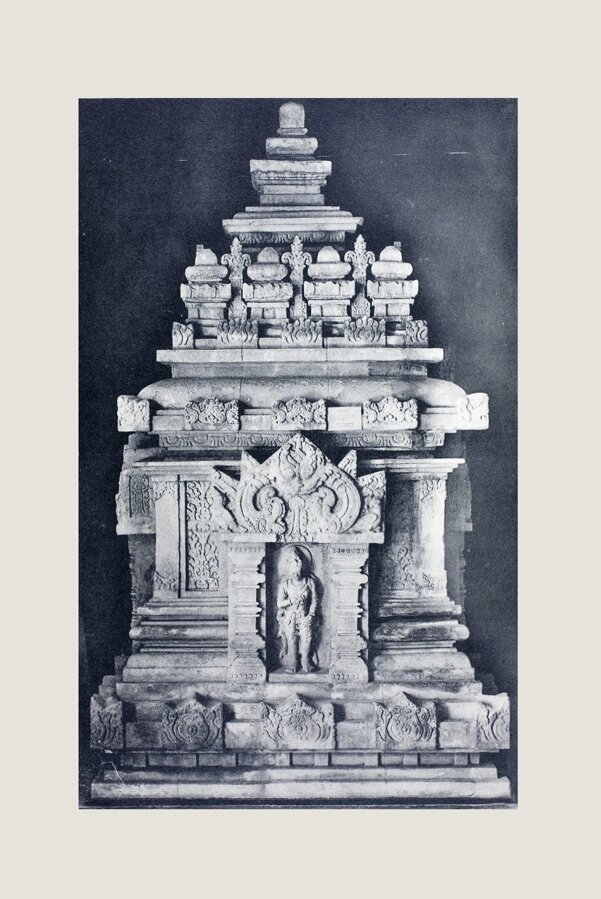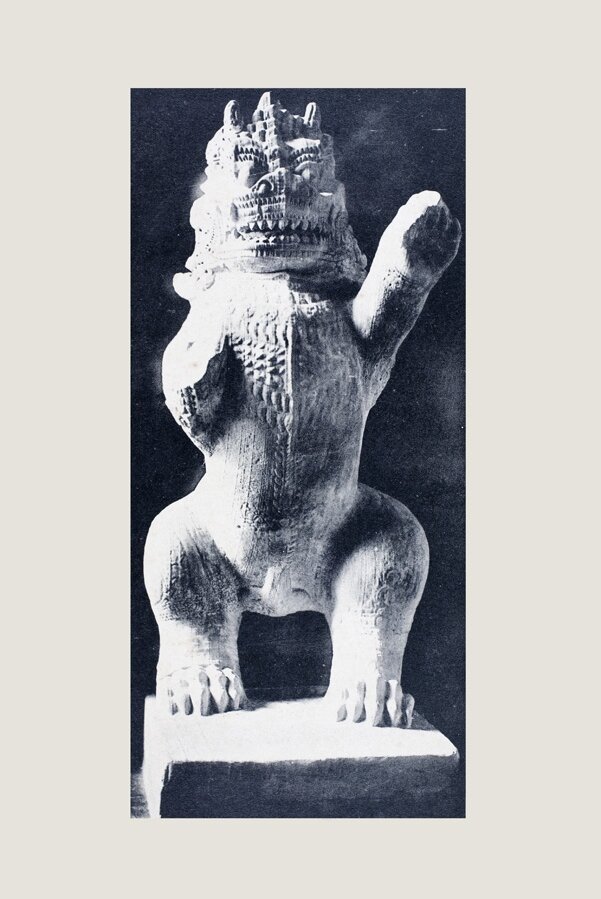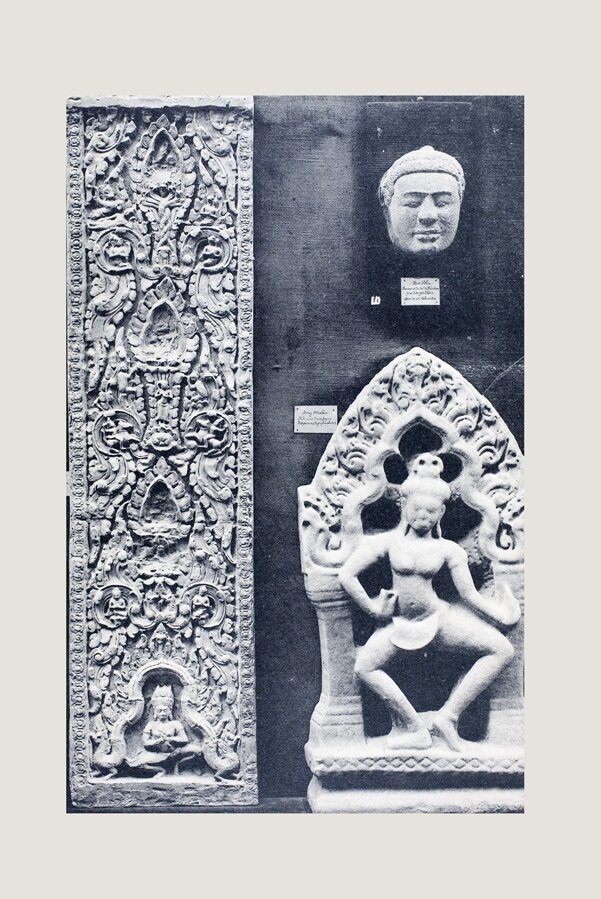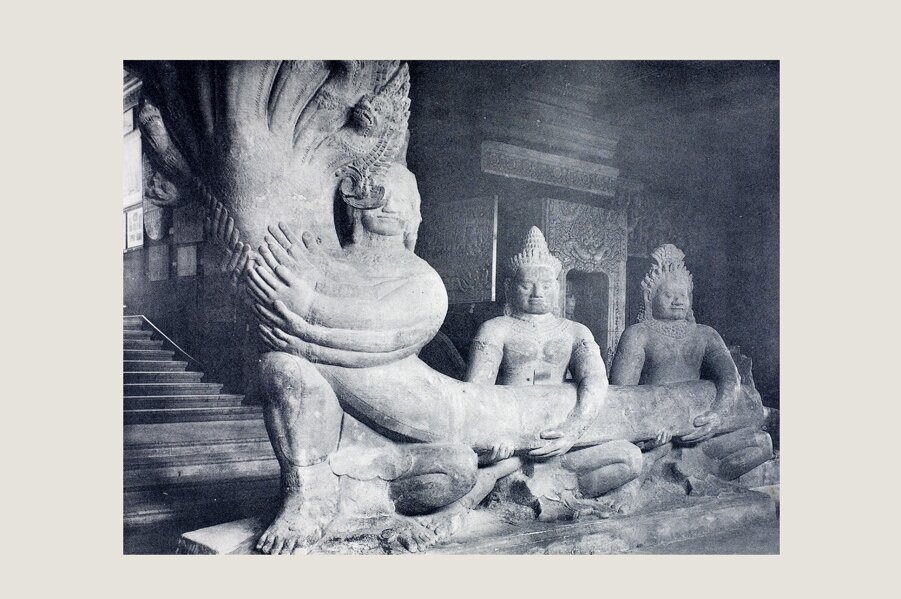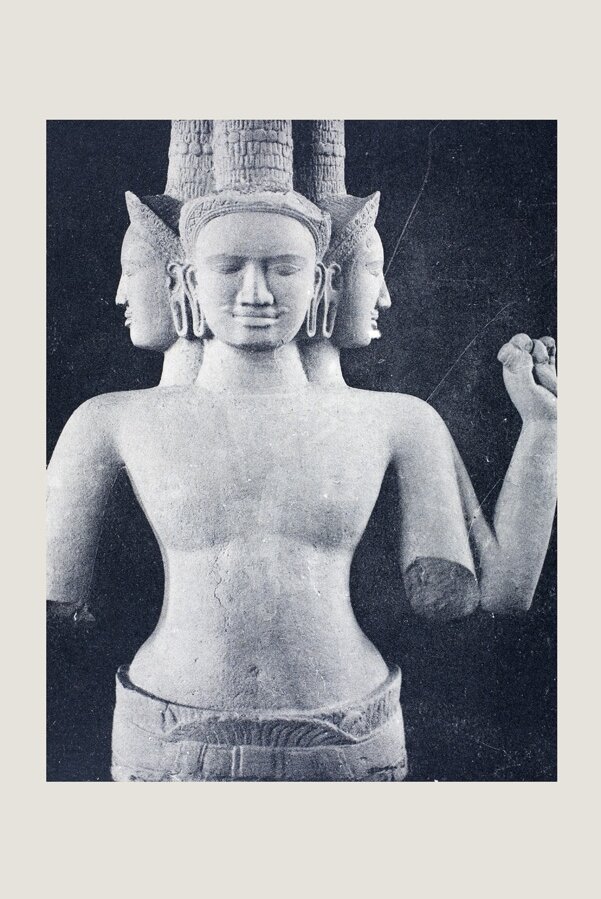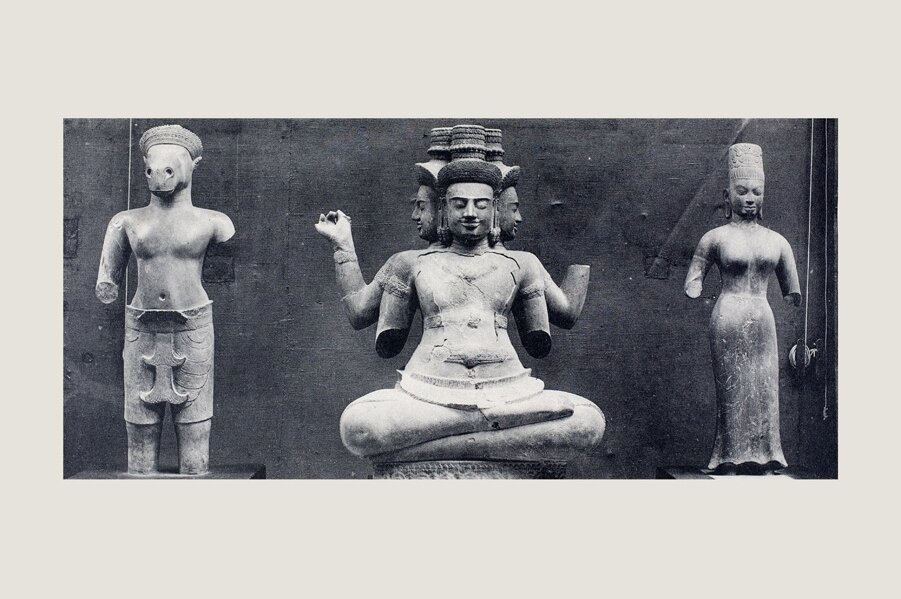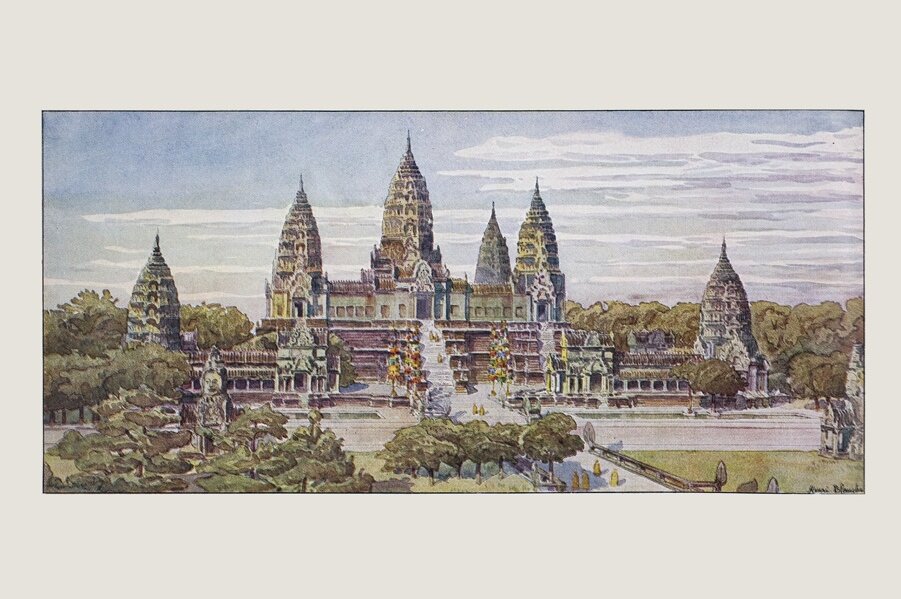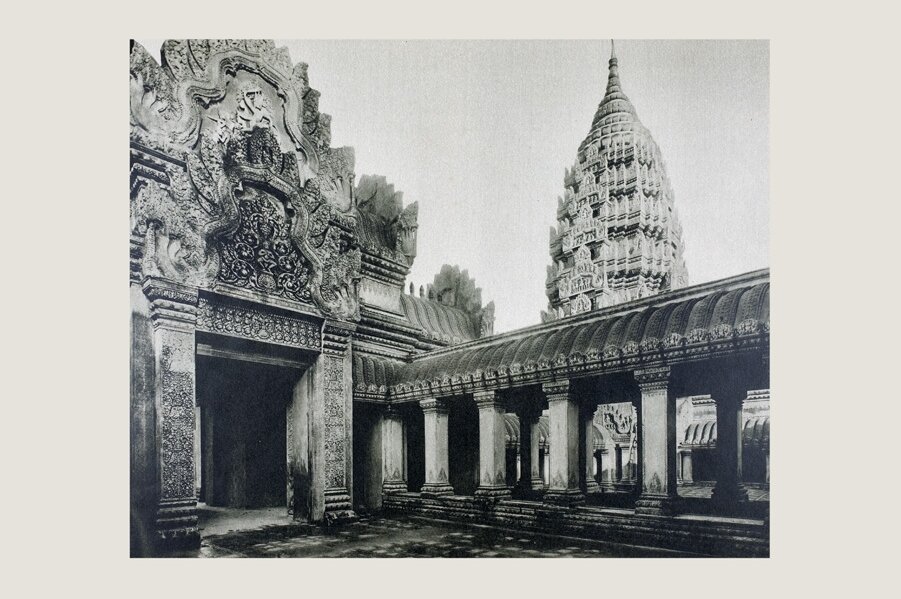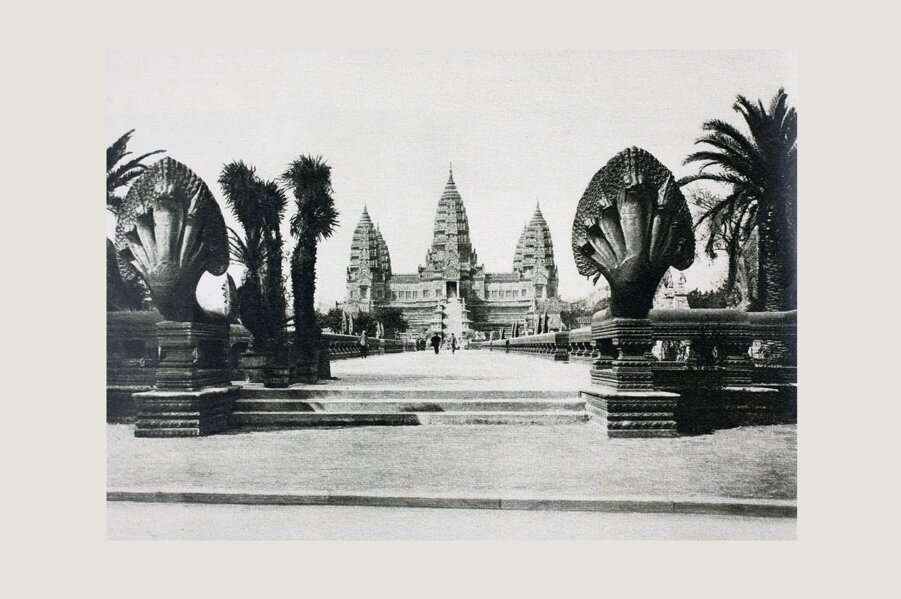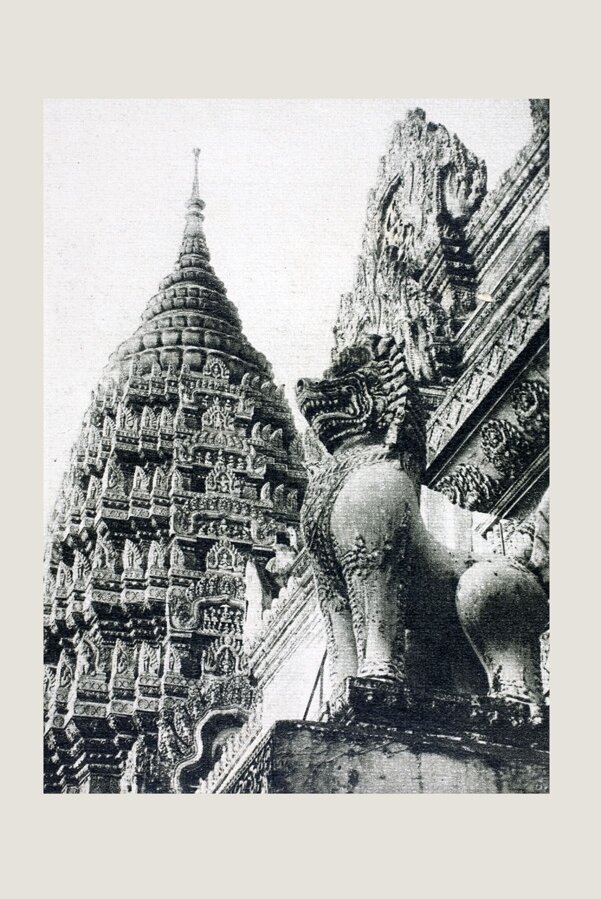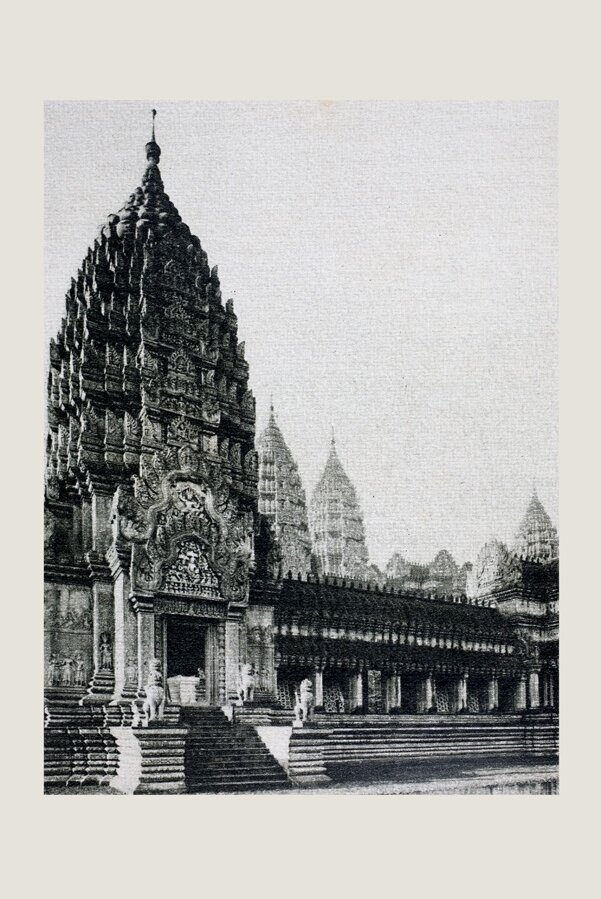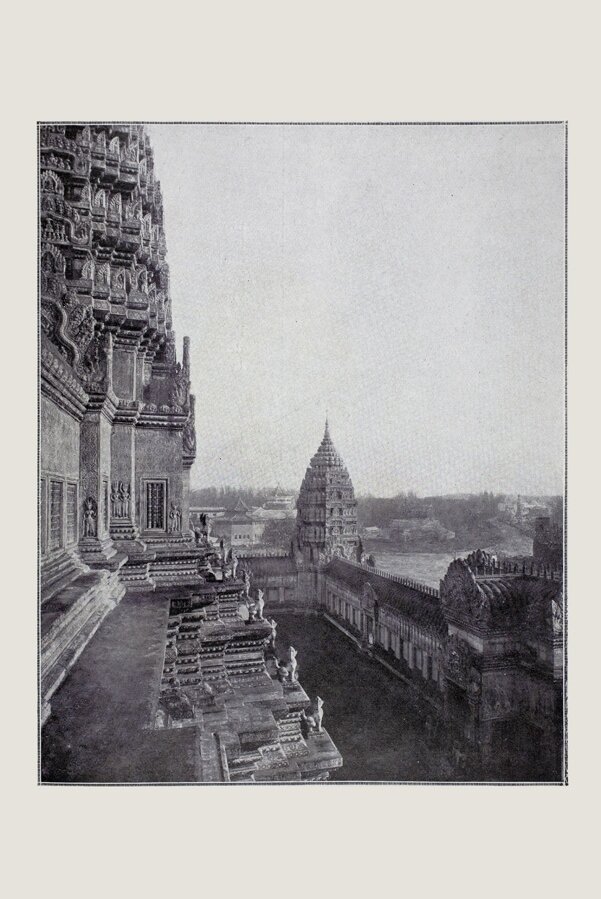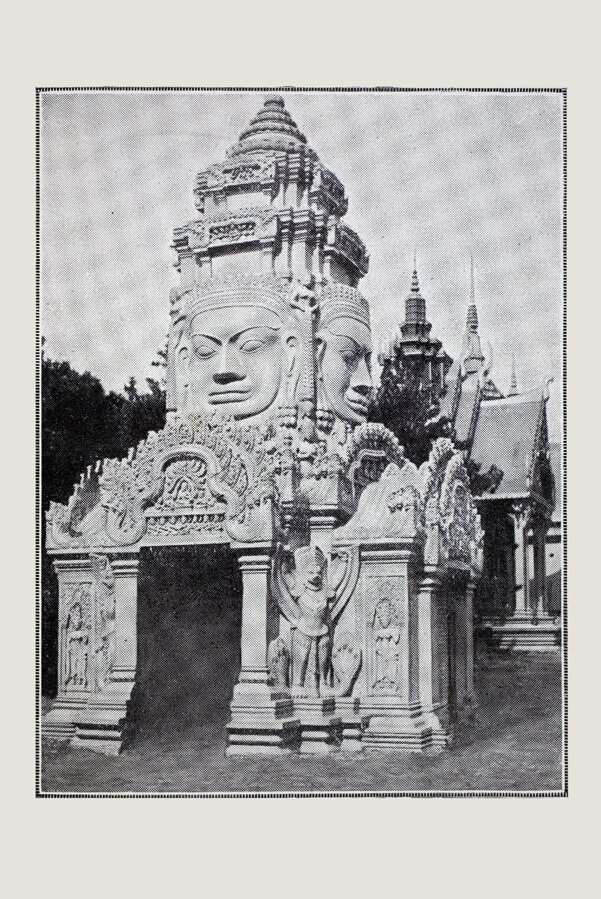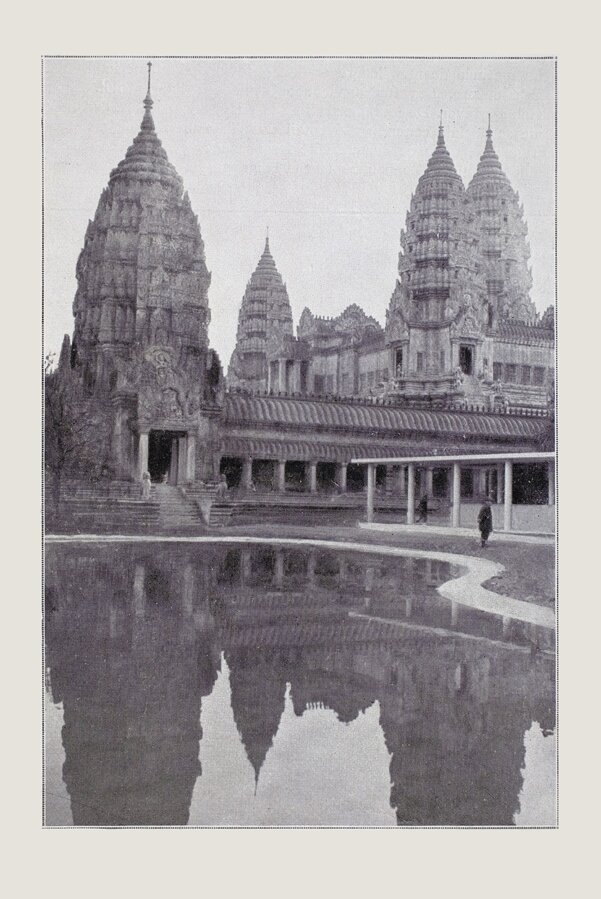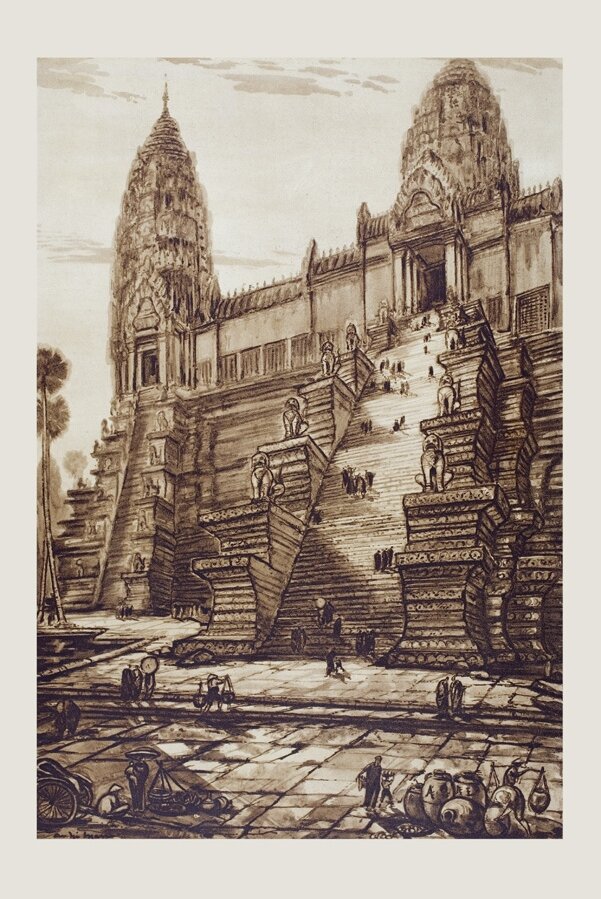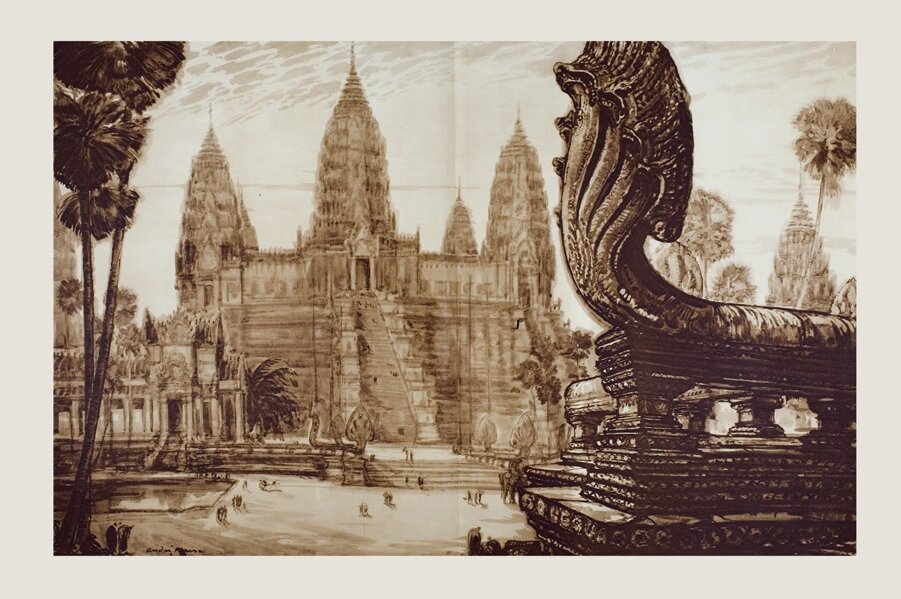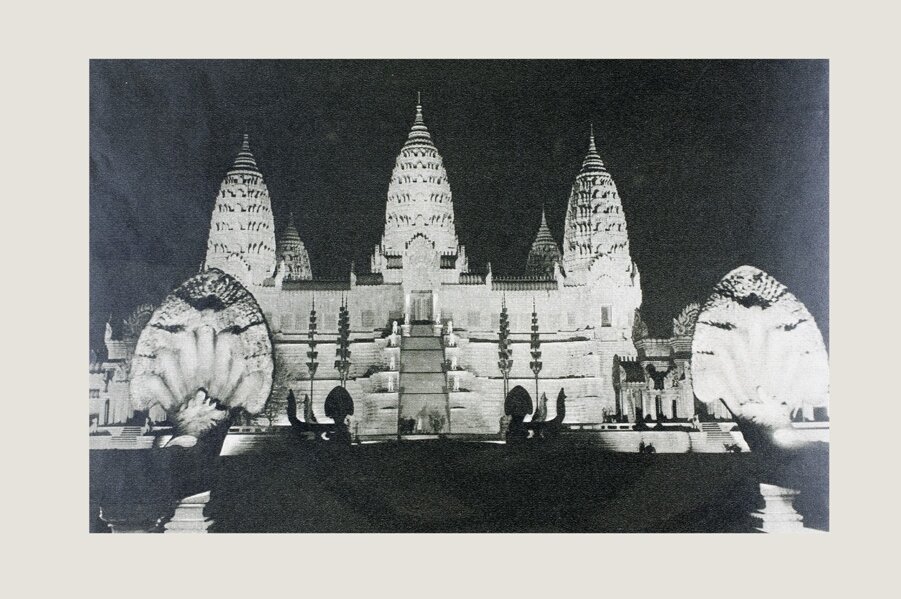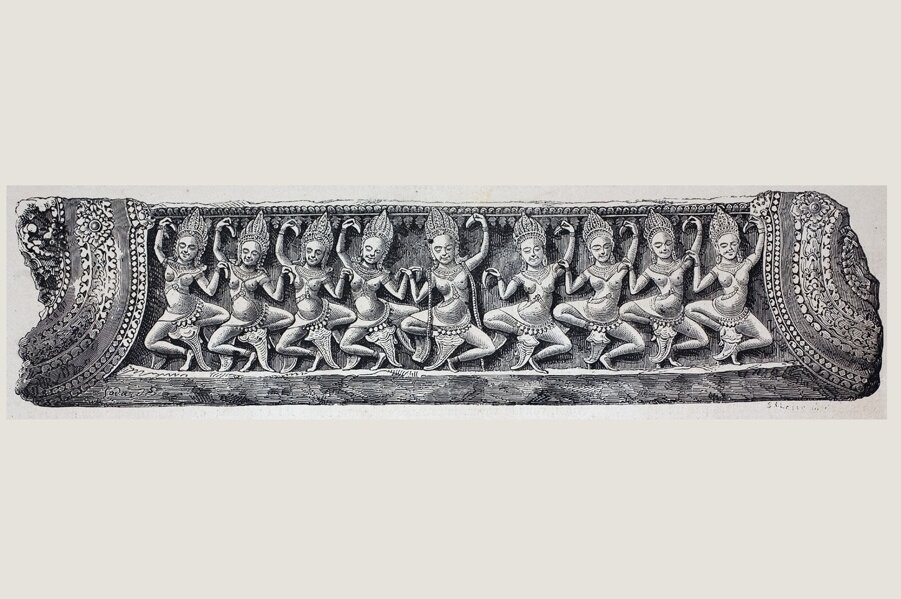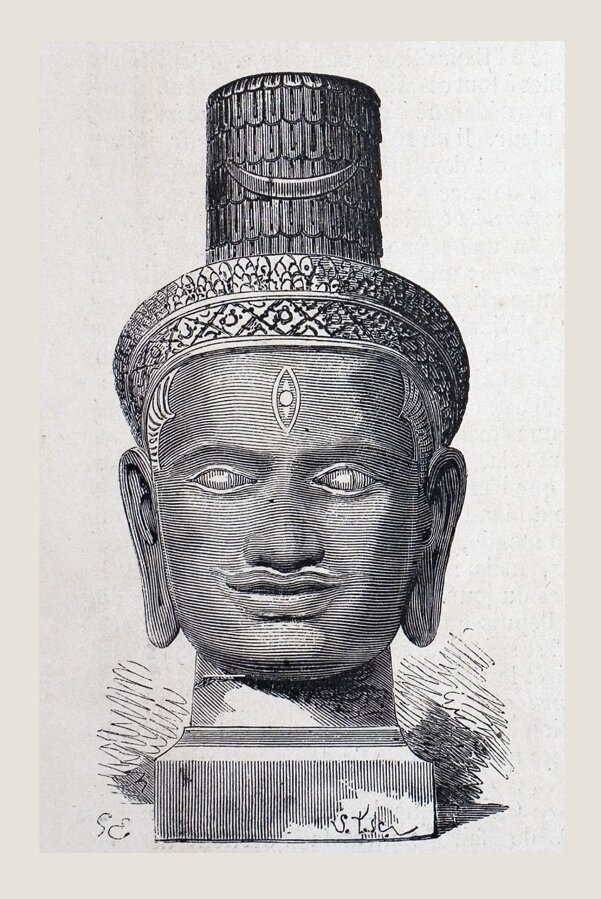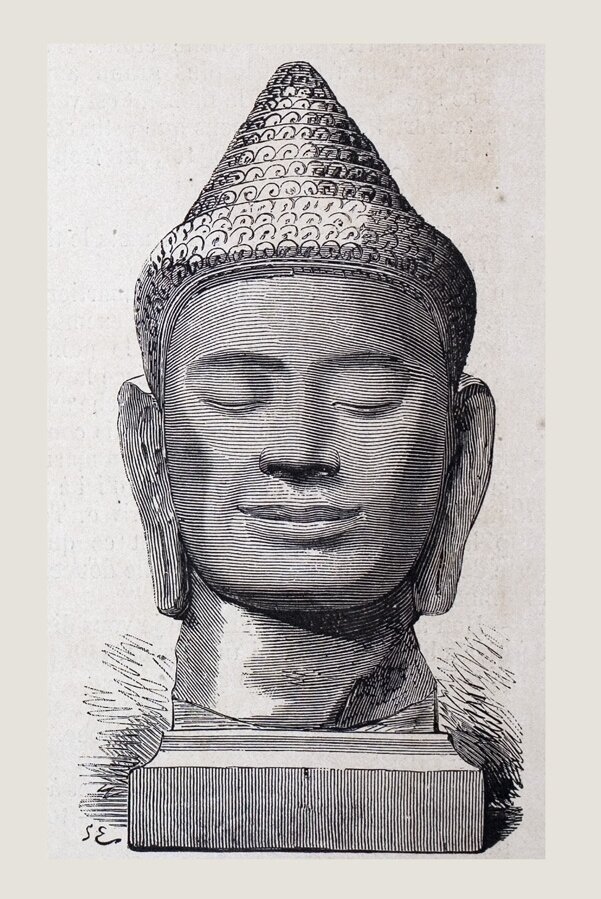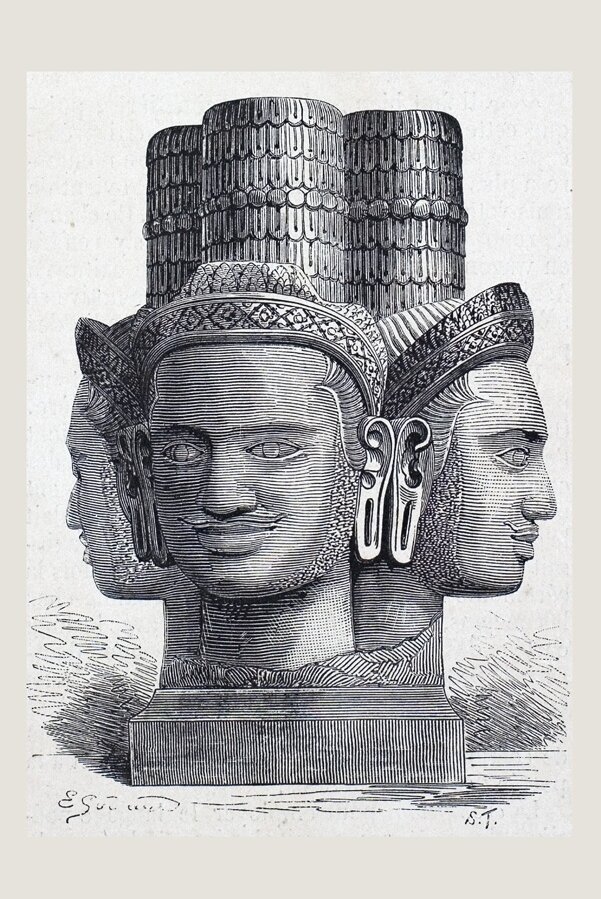Angkor Replicas
For these gigantic replicas, French powers-that-be recruited the best architects and craftsmen. However, ideological self-celebration primed over accuracy.
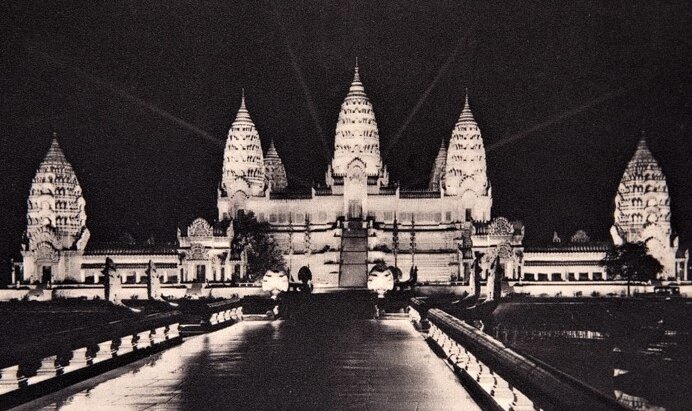
Keep reading
After the “Pagode d’Angkor” (Angkor Pagoda) attracted Parisian citizens and visitors in droves during the 1889 “Exposition Universelle” (the British version was named Great Exhibition of the Works of Industry of All Nations), the most impressive attempt in construing some “Angkor Vat For Everyone” outside of Cambodia occured in 1931.
From May till November that year, the Angkor replica on the shore of the Daumesnil Lake in Vincennes (Parisian leafy suburb) took over up to 10% of the land devoted to the grandiose Colonial International Exhibition.
Renowned architects, sculptors and contractors worked on the reconstitution. However, the whole concept was not intended to respect the actual, majestic Khmer architectural prowess.
Visiting the exhibition, French orientalist Gilberte de Coral-Rémusat noted with obvious dismay that the five Angkor towers had been topped by “spires in the style of Siamese pagodas”. Also, in order to accommodate the rather lazy European visitors, the “monumental stairs have been made much less steep than the original ones, thus whittling down the formidable and awe-inspiring aspect of the entrances.”
For the 1931 Angkor Replica, the following creators have been credited:
Architects: Charles Blanche and his son, G. Blanche. To give an idea of the scope of this architectural feat, suffice to say the main Angkor tower in Vincennes was 55-meter high, and 2,350 tons of plasted were used for the main façade.
Sculpture: A. Auberlet — Master-Sculptor “on wood, stone and marble”, Auberlet was then at the peak of his career. Founded in 1873, Maison Auberlet was still active in the 2010s (as Maison Auberlet et Laurent). See here samples of stucco moldings and stone carvings.
Lighting/Illumination: Famous in his time as “The Magician of Light”, Italian-born engineer Fernand Jacopozzi (1877−1932) had been acclaimed in 1925 for his illumination of the Eiffel Tower, which gave Paris its international reputation as “The City of Lights”. See a biographical notice here. See more about 1931 Angkor Vat illumination here.
More about Angkor Reconstitutions, Achieved or Attempted
- In 2016, Indian official expressed the wish to build a full-size replica of Angkor Wat on the Indian territory, project met more than cautiously by Cambodian authorities.
- King Mongkut of Siam planned to dismantle one of the Angkorian temples and reassemble it somewhere on Siamese territory. He ultimately downsized the project, ordering instead the construction of a small replica of Angkor Wat. The model remained at Wat Phra Sri Ratanasasadaram (the Temple of the Emerald Buddha) in Bangkok, and Cambodia Prime Minister Hun Sen personally visited it in the early 1990s.

